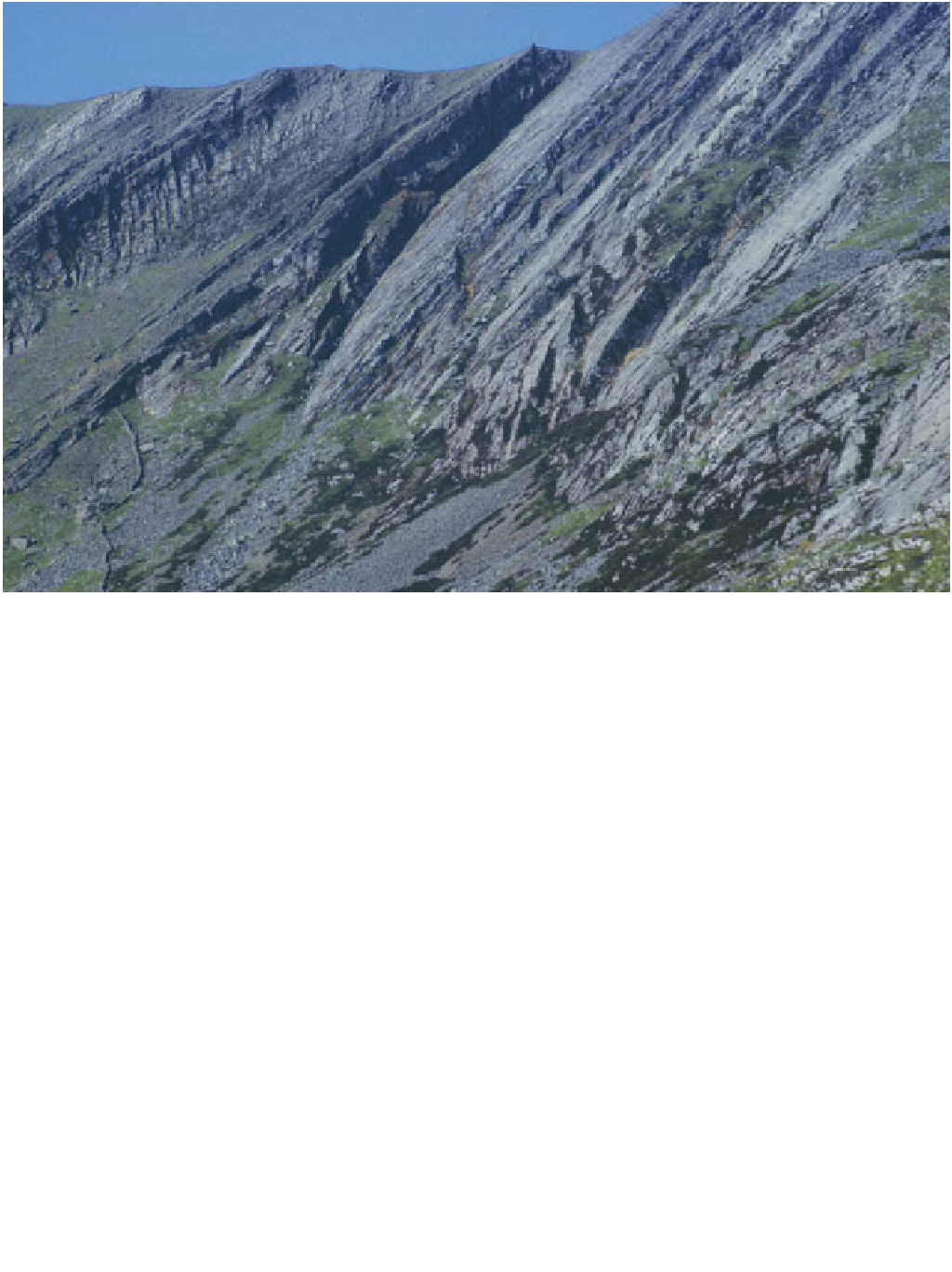Geoscience Reference
In-Depth Information
Plate 13.6
Tectono-stratigraphic structures exploited by glacial erosion and controlling the rock wall in Cwm Graianog, a cirque
basin above Nant Francon, Snowdonia. Tilted bedding planes in Lower Palaeozoic subduction trench sandstones were steeply
folded during the Caledonian Orogeny.
Photo: Ken Addison
hydrofracture
, occurs in response to a 9 per cent expansion
of water on freezing. In open fractures this stress is taken
up by voids or ice itself. However, if initial freezing of
surface and pore water seals the fracture, subsurface water
is now confined and further freezing expansion applies a
force of up to 20 MN m
-2
to the rock. Repeated freezing
and thawing generate
fatigue
failure in due course. It is
thought that diurnal or other high-frequency cycles
between -10
C and +10
C in more maritime cold climates
are far more effective than seasonal freeze-thaw cycles
with large temperature ranges (in continental cold
climates). Large temperature oscillations are also behind
insolation weathering
, this time in hot climates, with
diurnal temperature ranges of 30-60
minerals.
Salt weathering
does not necessarily require
cyclical changes, relying instead on crystallization in voids.
Water may be sourced externally or drawn to the surface
by capillary action, following a phase of solution
weathering. Salt weathering is more likely to be found in
bricks and concrete is common in temperate climates.
Slaking requires a moist climate. The only physical
weathering process not influenced directly by climate is
bioturbation by plant roots and burrowing animals, which
also facilitate the ingress of chemical weathering agents.
Of all these processes,
cryofracture
and bioturbation
are the most likely to exploit rock fractures directly.
Others will operate at intergranular or intercrystalline
discontinuities first, although larger-scale weathering
fronts open up along fractures.
C. The process is
more effective than chemical weathering in arid climates,
although water is probably required to enhance cooling
and hence fatigue.
Similar tensile stresses found in other processes
emphasize moisture, rather than thermal, regimes.
Slaking
involves cyclical hydration of rock, either by pore water
or by the much more expansive effects of swelling clay
Chemical weathering
Two important stages in the rock cycle haunt rocks at
the land surface. Mineral stability should be inversely









































